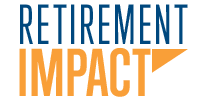As we step into 2024, the world of retirement planning continues to evolve. It’s a great time to look ahead and understand what will guide us in improving retirement outcomes for our clients and their participants. This year, we expect to see a mix of familiar trends from the Secure Act 2.0 and new focuses on personalization and financial wellness. Also, we’re keeping an eye on how the economy will influence our strategies, especially with the upcoming election and the Federal Reserve’s actions against inflation. Here are the major themes we are working on this year:
1. Secure Act Updates
Changes continue to be implemented with the passage of the Secure Act 2.0. Some changes were delayed such as the Roth Catch-up requirement which will take place after 2025, however, there are some mandatory and optional that we are focusing on.
Long Time Part Time Employees.
Employers will now be required to allow long-time part time employees to defer into their 401k if they have worked at least 500 hours of service in each of three consecutive 12 month periods and have attained age 21. That requirement is reduced to two consecutive 12 month periods for plan years after 2025. Additionally, for plan years after December 31, 2024, 403b’s will be required to adopt these new provisions.
Matching contributions on student loan payments
Starting this year, Retirement Plans may treat certain student loan payments as plan contributions for the purpose of match contributions. This provision may mean that employees who make qualified payments on student loans can receive a match even if they were not able to contribute to their plan.
Emergency savings accounts linked to retirement plans
Starting in 2024 the Secure Act 2.0 allows for plan participants to make pre-tax payments to a linked emergency savings account up to $2500 and withdraw up to $1000 without penalty. Providing access to participants to emergency savings when they need it and still save for retirement could help alleviate the anxiety of saving in a retirement plan for lower income workers.
The Secure Act has many other provisions being implemented in 2024 as well. It is important that you discuss with your Administrator to ensure compliance.
2. Personalization
A key area of improvement in the defined contribution space is the increase in levels of personalization at the participant level. By using key demographic information already known by the plan and information received directly from plan participants, 401k and 403b providers can create personalized saving and investment plans for employees at scale. Our approach to personalization is to utilize a tiered approach depending on the level of engagement from plan participants.
Plan-level personalized reporting and engagement
Often times participants are disengaged or recordkeepers don’t have the necessary technological solutions for detailed personalized planning. When that happens, we are finding innovative ways to use readily available plan demographic data to create personalized reports. This strategy enables us to identify participants who need help, so we can proactively reach out to them.
Increased use of Managed Accounts for engaged participants
When participants are engaged and the recordkeeper has appropriate and cost-effective technology solutions, managed accounts can provide an advanced level of personalization for retirement savers. Managed accounts allow professional third-party management of a participants retirement account based on demographic data and input from engaged participants.
When utilizing managed accounts in a retirement plan it is essential to monitor the program to ensure that participants who are paying extra for the service receive additional value through personalization.
3. Focus on Financial Wellness
Technology improvements and engagement
In 2024, there’s a heightened focus on financial wellness within 401(k) and 403(b) plans. Technological solutions are playing a key role, offering sophisticated tools that provide a comprehensive view of an individual’s financial health, including retirement readiness. More providers are entering the market increasing engagement and reducing costs. These new tools are increasing engagement and helping participants create healthier relationships with their money.
Retirement Income hits the mainstream
There is a growing momentum for in-plan retirement income strategies. Plans are increasingly incorporating features that help participants transition their savings into a stable income stream for retirement, addressing concerns about outliving their resources. This shift underscores the evolving role of 401(k) plans from mere savings vehicles to comprehensive retirement planning tools.
As the retirement income market evolves, platforms and investment managers are creating innovative retirement income products at lower costs to benefit more participants.
4. Economic Disruption
The 401(k) landscape in 2024 is also navigating through economic disruptions. The influence of the Federal Presidential election is sure to be contentious and could potentially mean social and economic disruptions through the 2024 election season.
Furthermore, the Federal Reserve’s efforts to achieve a ‘soft landing’ amidst economic uncertainty are crucial. The Fed’s monetary policies, aimed at stabilizing inflation while avoiding a recession, play a significant role in shaping the investment landscape. Participants and plan sponsors must stay vigilant, adapting their strategies to these evolving economic conditions to safeguard retirement assets.
Conclusion
The 401(k) and 403(b) landscape in 2024 presents both challenges and opportunities. Staying informed and adaptable is key to navigating this dynamic environment. Whether you’re a plan sponsor or a participant, understanding these trends is vital for making strategic decisions that secure a comfortable retirement.




